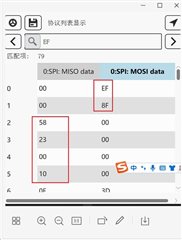Other Parts Discussed in Thread: CC1125,
Hi team ,
One of my customer is migrating from CC1125 to CC1120 and they are now reading the part number to distinguish from these two parts.
But when they read the register of part number, the value sometimes reads to be 0x00 which should be 0x48.
Could u help to explain the possible reason and provide some other ways to distinguish these two parts?




